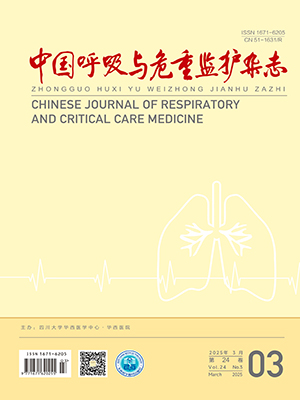| 1. |
中国疾病预防控制中心传染病处, 国家流感中心. 我国进入今冬流感流行高峰季节. 疾病监测, 2017, 32(12): 952.
|
| 2. |
中华人民共和国卫生部. 流行性感冒诊断与治疗指南(2011 年版). 国际流行病学传染病学杂志, 2012, 39(1): 1-9.
|
| 3. |
Centers for Disease C, Prevention. Estimates of deaths associated with seasonal influenza -- United States, 1976-2007. MMWR Morb Mortal Wkly Rep, 2010, 59(33): 1057-1062.
|
| 4. |
Mauskopf J, Klesse M, Lee S, et al. The burden of influenza complications in different high-risk groups: a targeted literature review. J Med Econ, 2013, 16(2): 264-277.
|
| 5. |
Peng Z, Feng L, Carolyn GM, et al. Characterizing the epidemiology, virology, and clinical features of influenza in China’s first severe acute respiratory infection sentinel surveillance system, February 2011 – October 2013. BMC Infect Dis, 2015, 15(1): 143.
|
| 6. |
Barker WH, Mullooly JP. Pneumonia and influenza deaths during epidemics: implications for prevention. Arch Intern Med, 1982, 142(1): 85-89.
|
| 7. |
WHO. Review of the 2017–2018 influenza season in the northern hemisphere[EB/OL]. http://www.who.int/wer/2018/wer9334/en/.
|
| 8. |
Puigbarberà J, Natividadsancho A, Trushakova S, et al. Epidemiology of hospital admissions with influenza during the 2013/2014 northern hemisphere influenza season: results from the Global Influenza Hospital Surveillance Network. PLoS One, 2016, 11(5): e0154970.
|
| 9. |
Likos AM, Kelvin DJ, Cameron CM, et al. Influenza viremia and the potential for blood‐borne transmission. Transfusion, 2010, 47(6): 1080-1088.
|
| 10. |
Hong KW, Cheong HJ, Choi WS, et al. Clinical courses and outcomes of hospitalized adult patients with seasonal influenza in Korea, 2011-2012: hospital-based influenza morbidity & mortality (HIMM) surveillance. J Infect Chemother, 2014, 20(1): 9-14.
|
| 11. |
Brundage JF. Interactions between influenza and bacterial respiratory pathogens: implications for pandemic preparedness. Lancet Infect Dis, 2006, 6(5): 303-312.
|
| 12. |
Petersdorf RG, Fusco JJ, Harter DH, et al. Pulmonary infections complicating Asian influenza. Arch Intern Med, 1959, 103(2): 262-272.
|
| 13. |
Centers for Disease Control and Prevention (CDC). Bacterial coinfections in lung tissue specimens from fatal cases of 2009 pandemic influenza A (H1N1) - United States, May-August 2009. MMWR Morb Mortal Wkly Rep, 2009, 58(38): 1071-1074.
|
| 14. |
中华人民共和国国家卫生和计划生育委员会. 流行性感冒诊疗方案(2018 年版). 中华临床感染病杂志, 2018, 11(1): 1-5.
|
| 15. |
Cui W, Zhao HW, Xu L, et al. Factors associated with death in hospitalized pneumonia patients with 2009 H1N1 influenza in Shenyang, China. BMC Infect Dis, 2010, 10: 145.
|
| 16. |
吴双胜, 杨鹏, 李海月, 等. 2007-2010 年北京市 18 岁以上居民流行性感冒疫苗接种情况及阻碍因素. 中华预防医学杂志, 2011, 45(12): 1077-1081.
|
| 17. |
李海月, 吴双胜, 杨鹏, 等. 北京市 2008-2010 年老年人流行性感冒疫苗接种情况及影响因素分析. 中华流行病学杂志, 2012, 33(2): 247-248.
|
| 18. |
WHO. Recommended composition of influenza virus vaccines for use in the 2017–2018 northern hemisphere influenza season. Wkly Epidemiol Rec, 2017, 92(11): 117-128.
|
| 19. |
Abdelaty NM. Risk factors and prognostic criteria in 230 patients with influenza A (H1N1) infection. Egypt J Chest Dis Tuberc, 2013, 62(1): 1-8.
|
| 20. |
Shi SJ, Li H, Liu M, et al. Mortality prediction to hospitalized patients with influenza pneumonia: PO2/FiO2 combined lymphocyte count is the answer. Clin Respir J, 2017, 11(3): 352.
|
| 21. |
周乙华, 赵伟, 宋培新, 等. 外周血淋巴细胞减少可提示重型甲型 H1N1 流感. 中国病毒病杂志, 2012, 2(2): 128-132.
|




